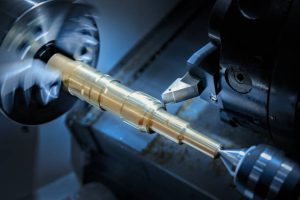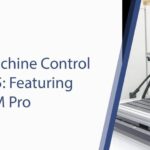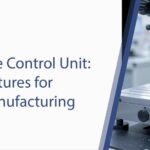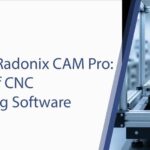Efficient CNC Programming: Intuitive CNC Controller Interfaces
In CNC machining, Efficient CNC programming directly impacts both productivity and precision.
One of the most influential factors determining this efficiency is the user interface (UI) of the CNC controller. A well-designed, intuitive interface simplifies complex processes, minimizes errors, and accelerates operator proficiency.
This article explores the critical role of intuitive UIs in CNC controllers and how they improve performance in modern manufacturing.

1. The Role of User Interfaces in CNC Controllers
The user interface acts as the bridge between the operator and the machine. For CNC controllers, an intuitive UI ensures that even complex machining tasks are executed with ease and precision. A clean design, logical layout, and responsive controls help operators navigate efficiently, reducing programming confusion and improving accuracy. Modern UIs also integrate touchscreens and visual cues that make interaction more natural and reduce the need for extensive technical knowledge.
2. Streamlined Workflows and Faster Training
An intuitive CNC interface simplifies command structures and organizes programming options logically. This accelerates daily operations and shortens the training period for new operators—a vital factor in maintaining productivity. By reducing the learning curve, manufacturers can onboard staff faster, lower training costs, and maintain consistency across shifts. For industries facing labor shortages, intuitive UIs play a crucial role in ensuring continuous production without compromising quality.
3. Quick Access to Essential Functions
Efficiency in CNC programming relies heavily on how easily operators can access commonly used commands and tools. Advanced CNC interfaces use customizable dashboards and shortcuts to display critical parameters such as feed rate, spindle speed, and tool position. This reduces time spent searching through multiple menus and minimizes operator fatigue. By prioritizing essential functions, intuitive interfaces help streamline the production cycle and enhance responsiveness on the factory floor.
4. Visual Representation and Simulation Tools
Modern CNC systems integrate powerful visualization tools that display 3D simulations of toolpaths and machining operations. These graphical interfaces allow operators to preview and verify the machining sequence before execution. The benefits are clear:
- Collision Detection: Identifies potential tool or workpiece collisions.
- Error Prevention: Highlights inconsistencies before machining begins.
- Operator Confidence: Enables users to visualize results and make adjustments safely.
These simulation tools reduce trial-and-error programming, ensuring smoother operations and higher accuracy.
5. Built-In Error Prevention and Validation
A key benefit of intuitive UIs is their ability to detect and prevent errors in real time. Integrated validation systems alert operators to incorrect codes, unsafe tool movements, or improper inputs. Smart prompts, visual warnings, and step-by-step guidance reduce the risk of costly downtime caused by programming mistakes. This proactive approach improves machine reliability, enhances safety, and increases production quality.
6. Customization for Specific Applications
Different industries—automotive, aerospace, wood, or metal processing—require tailored workflows. Modern CNC controllers, such as those by Radonix, allow full interface customization. Operators can modify layouts, create shortcuts, or adapt displays to specific production environments. Customizable UIs make the system more relevant to each application, increasing operator comfort and reducing time spent on repetitive adjustments.
7. Accessibility and Multilingual Support
In global production environments, accessibility and language flexibility are essential. Multilingual UIs ensure that operators from diverse regions can work effectively without language barriers. Clear icons, color coding, and consistent menu structures enhance usability, reduce communication errors, and improve safety standards across multinational teams.
8. Remote Programming and Connectivity
With the rise of Industry 4.0, CNC controllers now support cloud and network connectivity. Intuitive interfaces enable remote programming, real-time monitoring, and off-site diagnostics. Engineers can adjust machining parameters, schedule maintenance, or review performance data from anywhere. This capability increases flexibility, reduces machine idle time, and supports predictive maintenance.
Conclusion
An intuitive user interface in CNC controllers is no longer a luxury—it is a necessity for achieving efficiency, precision, and competitiveness in modern manufacturing. By streamlining workflows, enabling faster training, improving visualization, and integrating smart connectivity, intuitive UIs empower operators and optimize machine performance.
Radonix continues to develop advanced CNC control systems with user-centered design principles that enhance usability, productivity, and long-term reliability. Investing in Radonix CNC controllers ensures a future-ready, efficient, and operator-friendly manufacturing environment.
Contact Us:
-
- E-Mail: info@radonix.com
- Phone: +90 (553) 920 5500








